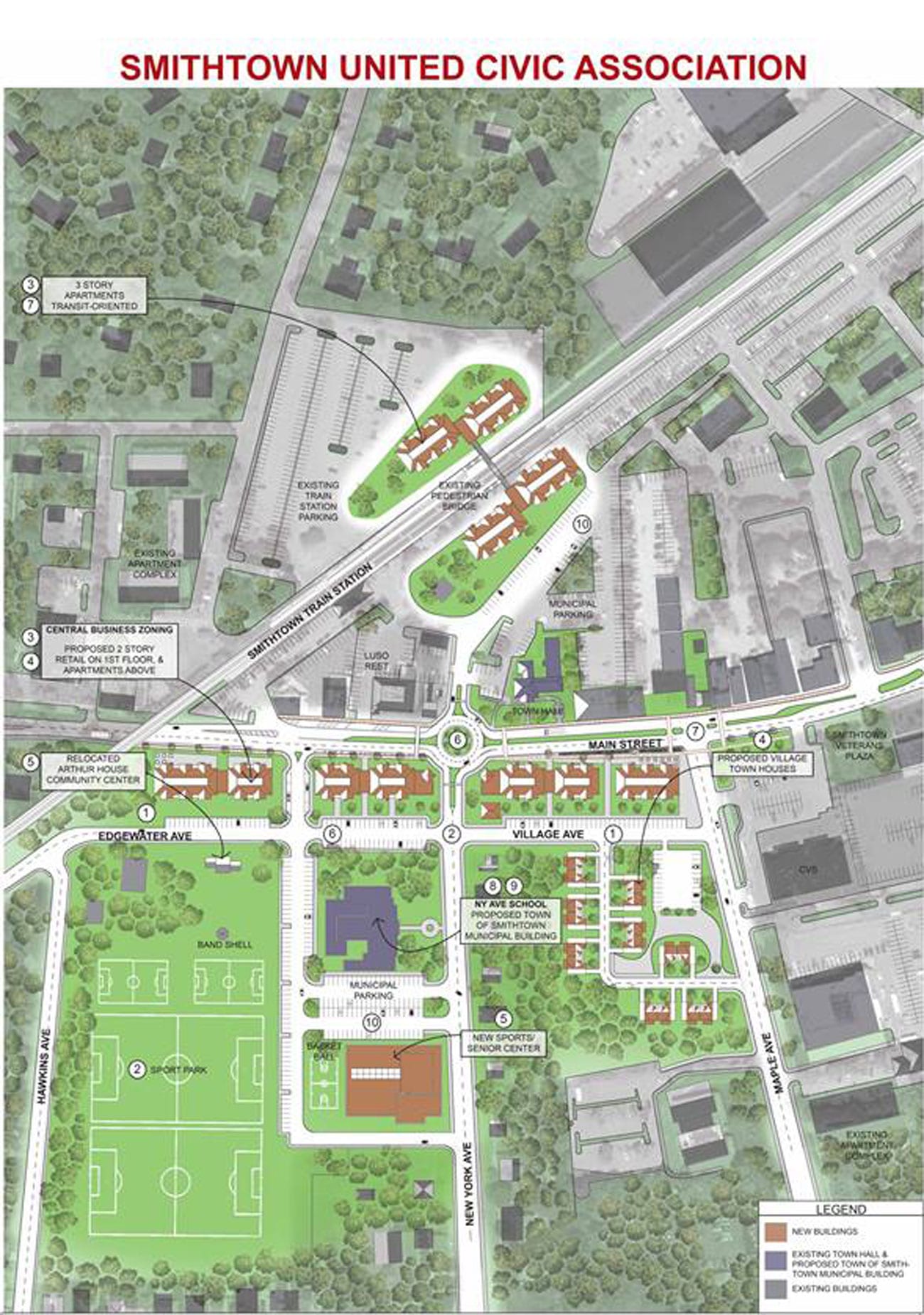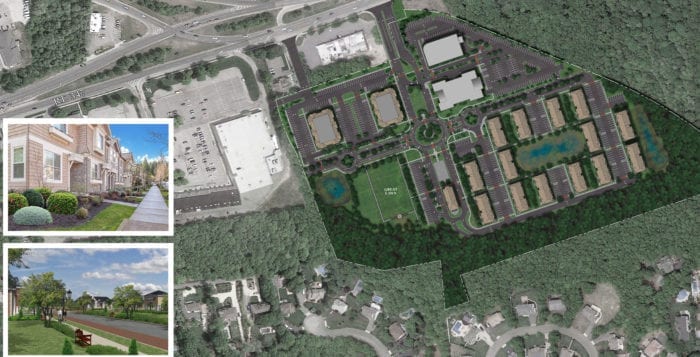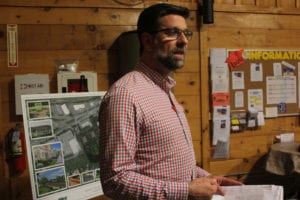
A small group of Smithtown citizens have come together to draft and present a plan they hope may lead to big changes for Main Street.
The Smithtown United Civic Association unveiled a detailed conceptual plan for downtown revitalization Oct. 6 on its Facebook page. The group is asking residents to review the proposal and provide feedback via social media before they present it to town officials.
Timothy Small, president of Smithtown United, said the organization’s goal is to give local residents a voice in the future of their town. It was formed when Smithtown residents came together earlier this year after two events: New York Gov. Andrew Cuomo (D) allocated $20 million for sewers in Smithtown and the proposed sale of Smithtown school district administration headquarters on New York Avenue to the town for a sewer treatment plant to support a condominium development. Small said the two events set in motion real opportunity for revitalization of the town.
“If you look at the downtown areas of Smithtown, Kings Park and St. James, they are tired looking,” he said. “There’s a lot of vacant shops and properties. We live in a wonderful town. The schools are wonderful, we love our homes, but it’s our downtown business districts that are deeply suffering.”
Small, a retired engineer who held an executive position at a utility company, said for approximately six months the group assessed the community needs and drew inspiration from surrounding towns including Huntington, Patchogue, Sayville, Bay Shore, Farmingdale and Babylon for changes they’d like to see in Smithtown.
Smithtown United’s plan for the western downtown area focuses on several key points including consolidation of the town offices into the New York Avenue school building and retaining the sports field behind it for public use.
“It’s the last green space that remains in all of downtown,” Small said. “I would consider that an anchor for the western edge of redevelopment. It would be tragic to see that property lost to dense development.”
The civic supports the town’s acquisition of the property in exchange for selling off its other buildings scattered across the business district, but discussions of the deal have been tabled by the Smithtown school officials. The plan also proposes several existing downtown storefronts be made into two-story, mixed-use buildings with retail on the first floor and apartments above. These housing options, according to Small, would be attractive to young adults and senior citizens. Behind the existing New York Avenue school district property, the plan calls for construction of a new sports and community center.
“We need a place for our kids to go in the evening,” Small said. “There needs to be a community space for our residents and young adults.”
The conceptual design also calls for several changes to Smithtown’s existing roadways, including a rotary at the intersection of Main Street and New York Avenue and rerouting Edgewater Avenue to run parallel to Main Street. This would cause Edgewater Avenue to empty onto Maple Avenue, and there would be a new set of village townhouses built on the southwest corner of the new intersection.
To further increase available housing, the proposed plan suggests the construction of three-story, transit-oriented housing near the Long Island Rail Road train station and municipal parking lots.
Initial feedback on the plan from residents on the civic’s Facebook page has been a mix of positive and negative, along with offers to help refine it. Supporters have praised the organization for taking action, while critics expressed traffic concerns.
“Main Street is already undersized for what it is used for,” said John McCormick, 29, of Smithtown. “[The] parking does not look to be sufficient for customers of the first-floor shops and people renting out upstairs apartments.”
McCormick, a young homeowner, feared adding townhouses and apartments would change the character of the local community and the plan’s possible impact on the school district.
Smithtown resident Michael Tarquinio, 20, said the plan was a step in the right direction but needed to be more innovative.
“They need to stop thinking with a Robert Moses mind-set,” Tarquinio said, who is studying environmental science at the University of Maine. “I’m all for it, but you can’t wipe out your heritage and start fresh. You need to know where you came from to know where you are going.”
He said he believes successful downtown revitalization will require the civic to work with town, county and state officials to improve roadways and mass transportation options to reduce traffic.
Small said he agreed the proposed overhaul of both the business and residential space in downtown Smithtown required cooperation at several levels of government. It would only be possible if sewers can be brought to the downtown area.
“Anyone who is going to invest money into redevelopment won’t unless there is adequate sanitary sewer conditions,” Small said. “It’s essential.”
The civic group has tentative plans to present its proposal to Smithtown officials at the Oct. 26 town board meeting at 7 p.m. at town hall.









